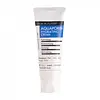What's inside
What's inside
 Key Ingredients
Key Ingredients

No key ingredients
 Benefits
Benefits

 Concerns
Concerns

 Ingredients Side-by-side
Ingredients Side-by-side

Water
Skin ConditioningCaprylic/Capric Triglyceride
MaskingBifida Ferment Lysate
Skin ConditioningGlycerin
HumectantNiacinamide
SmoothingCetearyl Alcohol
EmollientDipropylene Glycol
HumectantAscorbic Acid
AntioxidantButylene Glycol
HumectantGlyceryl Stearate Se
EmulsifyingCetyl Ethylhexanoate
EmollientPolyglyceryl-3 Methylglucose Distearate
EmulsifyingTromethamine
BufferingHydroxyacetophenone
AntioxidantCarbomer
Emulsion StabilisingButyrospermum Parkii Butter
Skin ConditioningPalmitic Acid
EmollientStearic Acid
CleansingPanthenol
Skin ConditioningParfum
MaskingTocopheryl Acetate
Antioxidant1,2-Hexanediol
Skin ConditioningAdenosine
Skin ConditioningCaprylyl Glycol
EmollientDisodium EDTA
Pentylene Glycol
Skin ConditioningSodium Hyaluronate
HumectantSodium Hyaluronate Crosspolymer
HumectantHydrolyzed Hyaluronic Acid
HumectantHyaluronic Acid
HumectantEthylhexylglycerin
Skin ConditioningHydrolyzed Sodium Hyaluronate
Skin ConditioningWater, Caprylic/Capric Triglyceride, Bifida Ferment Lysate, Glycerin, Niacinamide, Cetearyl Alcohol, Dipropylene Glycol, Ascorbic Acid, Butylene Glycol, Glyceryl Stearate Se, Cetyl Ethylhexanoate, Polyglyceryl-3 Methylglucose Distearate, Tromethamine, Hydroxyacetophenone, Carbomer, Butyrospermum Parkii Butter, Palmitic Acid, Stearic Acid, Panthenol, Parfum, Tocopheryl Acetate, 1,2-Hexanediol, Adenosine, Caprylyl Glycol, Disodium EDTA, Pentylene Glycol, Sodium Hyaluronate, Sodium Hyaluronate Crosspolymer, Hydrolyzed Hyaluronic Acid, Hyaluronic Acid, Ethylhexylglycerin, Hydrolyzed Sodium Hyaluronate
Betula Platyphylla Japonica Juice
Skin ConditioningGlyceryl Glucoside
HumectantGlycerin
Humectant1,2-Hexanediol
Skin ConditioningWater
Skin ConditioningCaprylic/Capric Triglyceride
MaskingCetearyl Alcohol
EmollientMethyl Gluceth-20
HumectantSqualane 1%
EmollientAcrylic Acid
Sodium Acrylate/Sodium Acryloyldimethyl Taurate Copolymer
Emulsion StabilisingTriethylhexanoin
MaskingPropanediol
SolventSimethicone
EmollientPolyglyceryl-10 Laurate
Skin ConditioningPolyglyceryl-10 Myristate
Skin ConditioningHydrolyzed Sodium Hyaluronate
Skin ConditioningBehenyl Alcohol
EmollientBetaine
HumectantEthylhexylglycerin
Skin ConditioningBetula Platyphylla Japonica Juice, Glyceryl Glucoside, Glycerin, 1,2-Hexanediol, Water, Caprylic/Capric Triglyceride, Cetearyl Alcohol, Methyl Gluceth-20, Squalane 1%, Acrylic Acid, Sodium Acrylate/Sodium Acryloyldimethyl Taurate Copolymer, Triethylhexanoin, Propanediol, Simethicone, Polyglyceryl-10 Laurate, Polyglyceryl-10 Myristate, Hydrolyzed Sodium Hyaluronate, Behenyl Alcohol, Betaine, Ethylhexylglycerin
 Reviews
Reviews

Ingredients Explained
These ingredients are found in both products.
Ingredients higher up in an ingredient list are typically present in a larger amount.
1,2-Hexanediol is a synthetic liquid and another multi-functional powerhouse.
It is a:
- Humectant, drawing moisture into the skin
- Emollient, helping to soften skin
- Solvent, dispersing and stabilizing formulas
- Preservative booster, enhancing the antimicrobial activity of other preservatives
This ingredient is an emollient, solvent, and texture enhancer. It is considered a skin-softener by helping the skin prevent moisture loss.
It helps thicken a product's formula and makes it easier to spread by dissolving clumping compounds.
Caprylic Triglyceride is made by combining glycerin with coconut oil, forming a clear liquid.
While there is an assumption Caprylic Triglyceride can clog pores due to it being derived from coconut oil, there is no research supporting this.
Learn more about Caprylic/Capric TriglycerideCetearyl alcohol is a mixture of two fatty alcohols: cetyl alcohol and stearyl alcohol. It is mainly used as an emulsifier. Emulsifiers help prevent the separation of oils and products. Due to its composition, it can also be used to thicken a product or help create foam.
Cetearyl alcohol is an emollient. Emollients help soothe and hydrate the skin by trapping moisture.
Studies show Cetearyl alcohol is non-toxic and non-irritating. The FDA allows products labeled "alcohol-free" to have fatty alcohols.
This ingredient is usually derived from plant oils such as palm, vegetable, or coconut oils. There is debate on whether this ingredient will cause acne.
Due to the fatty acid base, this ingredient may not be Malassezia folliculitis safe.
Learn more about Cetearyl AlcoholEthylhexylglycerin (we can't pronounce this either) is commonly used as a preservative and skin softener. It is derived from glyceryl.
You might see Ethylhexylglycerin often paired with other preservatives such as phenoxyethanol. Ethylhexylglycerin has been found to increase the effectiveness of these other preservatives.
Glycerin is already naturally found in your skin. It helps moisturize and protect your skin.
A study from 2016 found glycerin to be more effective as a humectant than AHAs and hyaluronic acid.
As a humectant, it helps the skin stay hydrated by pulling moisture to your skin. The low molecular weight of glycerin allows it to pull moisture into the deeper layers of your skin.
Hydrated skin improves your skin barrier; Your skin barrier helps protect against irritants and bacteria.
Glycerin has also been found to have antimicrobial and antiviral properties. Due to these properties, glycerin is often used in wound and burn treatments.
In cosmetics, glycerin is usually derived from plants such as soybean or palm. However, it can also be sourced from animals, such as tallow or animal fat.
This ingredient is organic, colorless, odorless, and non-toxic.
Glycerin is the name for this ingredient in American English. British English uses Glycerol/Glycerine.
Learn more about GlycerinThis ingredient is created by putting sodium hyaluronate through hydrolysis.
You might know this as 'mini' or 'ultra low-molecular weight' hyaluronic acid. The small molecule size means it is able to travel deeper in the skin.
According to studies, low molecular-weight hyaluronic acid can:
One study from 2011 found ultra-low weight HA to show pro-inflammatory properties. Another study from 2022 found it to downregulate UV-B induced inflammation.
Hydrolysis is a process of changing a molecule using water or enzymes.
This ingredient is water-soluble.
Learn more about Hydrolyzed Sodium HyaluronateWater. It's the most common cosmetic ingredient of all. You'll usually see it at the top of ingredient lists, meaning that it makes up the largest part of the product.
So why is it so popular? Water most often acts as a solvent - this means that it helps dissolve other ingredients into the formulation.
You'll also recognize water as that liquid we all need to stay alive. If you see this, drink a glass of water. Stay hydrated!
Learn more about Water